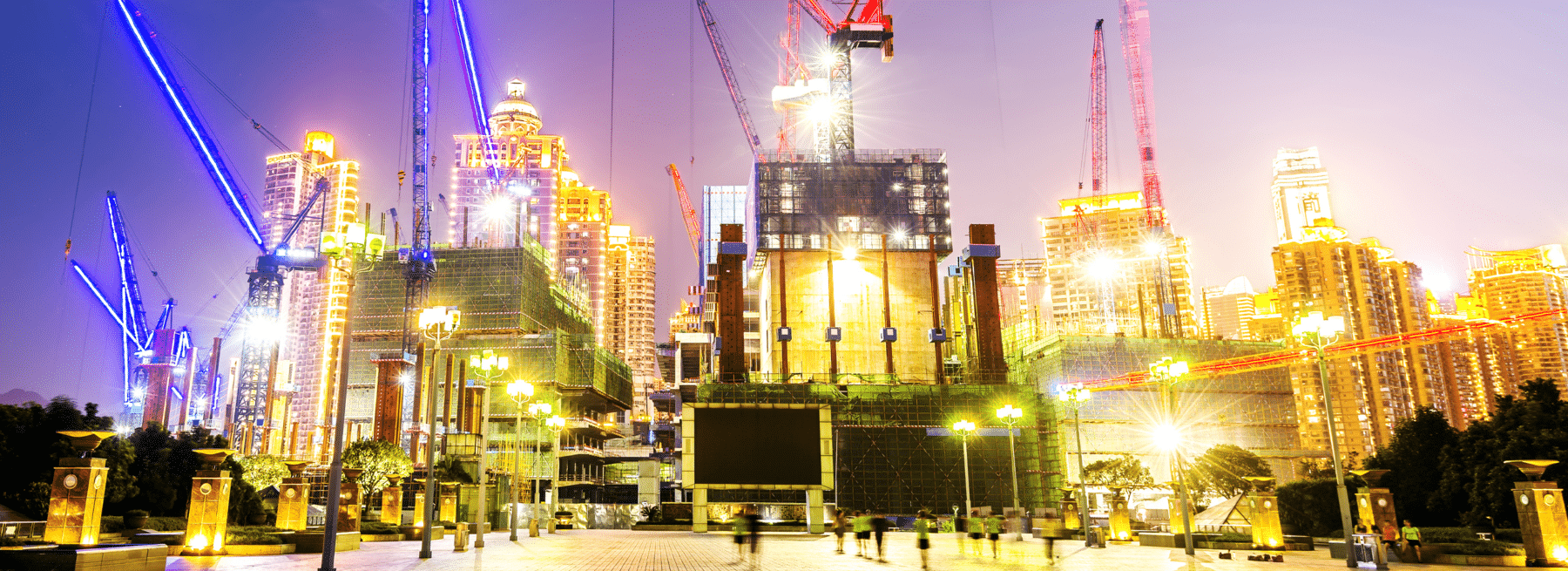Construction site security continues to be one of the industry’s biggest concerns. Construction deals with many security challenges that other industries don’t. They’re vulnerable to these problems because of the nature of the job and the site is out in the open. Managers and contractors at jobsites worry about theft, vandalism, injuries, liability issues, and more.
For one thing, construction has the highest rate of fatal work injuries as reported by the Bureau of Labor Statistics. Moreover, the National Equipment Register Equipment Theft Report reveals the theft of large construction equipment is between $300 million and $1 billion. Only one-fifth of the equipment is ever found and returned to its owner.
Additionally, liability claims can be an expensive problem when a construction site security doesn’t have proper layers. For instance, squatters go to the construction site at night to sleep. Then, they depart before the workers start arriving. If a squatter gets injured on the site, it could lead to a liability lawsuit. Yes, the squatter could potentially win such a lawsuit even though the person is trespassing. Therefore, investing in construction site security can help keep unauthorized people away from the property.
Here are 11 proven ways to add layers and fortify your construction site security to help reduce injuries, theft, vandalism, trespassing, and liability claims.
1. Create a construction site security strategy
Construction sites contain expensive assets like large equipment, machinery, copper wiring, tools, and other materials and supplies. Developing a construction site security strategy helps construction companies detail how layered security can help protect their construction site from thieves, vandals, and trespassers.
Every construction site is different. They are in different types of neighborhoods with different layouts and different factors affecting security such as entry and exit points, equipment, and materials. Every construction site will require customized security because of these varying elements. The general security template can be the same, but the specifics will be different for every project.
2. Put up a fence
The ability to install a fence depends on the construction site and any contracts or laws that may affect your project. The advantage of installing a fence around the construction site is to create a single point of entry and exit. This allows you to monitor everyone who comes to your construction site, verify people’s credentials, and maintain control over entry.
Intruders may attempt to climb or cut fences. Add another layer of security by using barbed wiring. Again, this may or may not be allowed. The more layers you have in construction site security, the less likely trespassers will be to plan their next crime on your construction site. If you have a fence, do a daily check to make sure no one has cut or damaged it.
3. Use effective lighting
Pitch black construction sites may frighten many people, but they don’t always scare criminals. Thieves could be more tempted to steal from your construction site because they may feel safer and believe no one will spot them when there is no lighting. However, there’s an art and science to effective lighting for security. That’s why it’s recommended you work with a security consultant who specializes in lighting.
The security consultant optimizes the lighting for your construction site to help lower your risk for theft. Once they’ve completed the installation, it’s important to inspect the lighting every single day to confirm it still works or to resolve any problems.
Just like you need to inspect your fencing on a daily basis, you also want to do the same with your lighting to make sure it still works properly.
4. Install an asset management tool
The construction industry already struggles with a shortage of qualified workers. This is why they need to ensure they have the required assets when they need them and store them elsewhere when they don’t need them. Hence, an asset-tracking tool is a worthwhile investment.
An asset management system lets construction companies enhance efficiencies and do more with less. In fact, more than 70 percent of participants in the U.S. Chamber of Commerce and USG Corporation survey say technology can increase productivity and the chances of completing the project on time.
Asset-tracking apps prevent workers from wasting precious time searching for needed assets. Assets will more likely be in good shape thanks to the tool’s ability to alert you when it’s time for servicing and maintenance. The last thing your construction site needs is to stop work because a critical asset stops working.
5. Create checklists
For safety and to prolong the life of equipment, workers should use a checklist as they review their equipment as well as their personal protective equipment. The checklists will help them verify they’re following safety protocols before, during, and after completing their tasks. When workers do something on a daily basis, they can grow complacent and forget a step. Checklists help prevent this from happening.
Create checklists for safety, equipment check-in and check-out, and anything that must be done every time. You may have a separate checklist for the hot and cold weather winter seasons. For example, during the colder months, it’s important to check and clear the site of snow and ice. Don’t forget to check the ladders, scaffolding, steps, and walkways.
Do the same after it rains. You want to reduce the chances of a slip and fall. Look for puddles and remediate them. For any areas you can’t clear out, put a rope around it or post easy-to-find signs with information. Make sure these signs and ropes stay secure.
6. Secure the perimeter around the construction site
Perimeter security protects everything within and around the property. The goal is to maintain safety and deter crime. Perimeter security focuses on more than safeguarding the building on the construction site. It also protects the areas outside of the site including the parking areas and pedestrian traffic.
Construction companies have many options for securing the job site for the entire project. The more security layers they have, the better the protection. Bolstering the security of your construction site can be as easy as locking the gates to as powerful as adding remote video surveillance with monitoring.
7. Conduct safety training regularly
Companies that go longer without a workplace incident have one thing in common. They hold safety training on a regular basis. Security must be part of that training. All it takes is one slip-up by a worker to bring down security. When you create your security strategy, include training and how often workers will be trained.
Your workers are the best resource for reporting potential problems. Reinforce the importance of “see something, say something” in the training. However, some don’t want to say anything for fear of retaliation. So, provide a way for them to report problems anonymously. Every new project and job site should have its own training.
8. Organize the construction site
An organized construction site helps boost safety, enhance productivity, and increase profits. When you organize a construction site, you’ll optimize it to shorten distances for transporting material to point of use. It will help ensure there are no blocked areas that prevent materials from moving the site easily, quickly, and safely.
An organized construction site improves the safe storage of materials. It can prevent duplicate handling of chemicals and materials. When you plan the organization of the site, it also creates paths to ensure equipment can move around the site safely. Set up the site to keep pedestrian and vehicle traffic separate.
9. Manage entry with an access control system
An access control system is an effective security option that gives you a simple way to manage who can and can’t enter the construction site. It automates access, so managers won’t have to worry about outsiders walking on the property. Whether you use an access control system, organize the site to have only one access point. This gives you more control over traffic.
10. Prepare for bad weather
It’s essential to monitor the weather and its impact on the construction site. Weather delays and damages cost construction sites billions of dollars. Video surveillance with monitoring helps make this and many other tasks easier. (See the next tip.) The security cameras can watch a site for flooding, broken pipes, and other problems. The sooner the issue is caught, the faster it can be resolved and minimize the associated costs from the damage.
Training comes to play again here. The Occupational Safety and Health Administration (OSHA) and the National Oceanic and Atmospheric Administration (NOAA) recommend that construction employers and workers receive training on summer and winter weather safety. Equipment needs to be prepared and maintained differently between cooler and warmer weather. Workers also need to be outfitted with proper gear for the temperatures and tasks.
11. Install video surveillance with remote monitoring
Strategically placed surveillance cameras help avert crime and vandalism, curtail damage, and protect the construction company from liability claims. The most powerful construction site security includes remote video surveillance that combines video analytics and trained human monitoring operators.
This hybrid video surveillance solution gives you the benefit of video analytics managing tedious tasks while the monitoring operator makes decisions on how to respond. Video analytics scan the construction site for one of its many programmed scenarios. It can watch for people approaching the property after hours. But it will ignore harmless things like flying trash and stray animals.
As soon as the system identifies something irregular, it alerts the on-duty monitoring operator. Depending on what’s happening, the operator can react by issuing a warning over an on-site speaker from a remote location away from the construction site. If the intruder does not leave, then the operator can follow them while contacting the police and giving them updates until they arrive.
On top of keeping watch over the entire perimeter, video surveillance records everything that happens on the site. Law enforcement and insurance companies can use video footage as proof in criminal cases and liability claims. It can potentially lower your liability insurance premiums and other costs.
What makes video surveillance different from other security solutions is that it’s proactive. It delivers the highest level of security for your construction site while helping to reduce liability and hazards. Video surveillance helps ensure a quick ROI for security because of all these benefits and more.
To learn more about this, pick up the Construction Security and Safety Best Practices guide. This detailed guide discusses industry challenges and solutions. You’ll learn about the current and forecasted trends in construction security as well as the options available. If you’d like to learn more now or after reading the guide, contact us.

